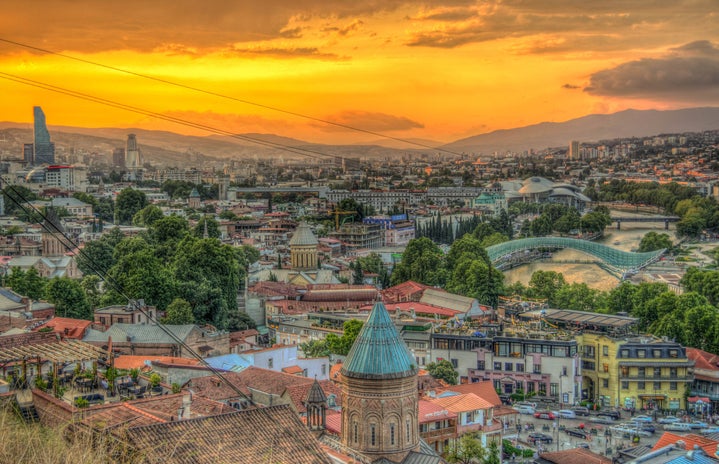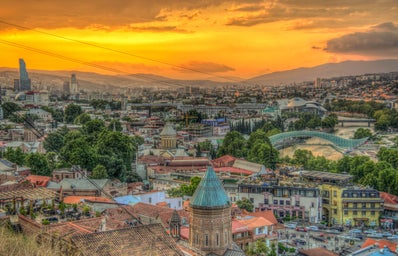Have you ever paused in the middle of a movie or TV show just to admire a particular scene’s attention to color, composition, and cinematography? It happened to me when I watched La La Land in December of 2016. The iconic scene pictured above matches the blues, pinks, and greens of the film’s overall color palette – meant to remind its viewers of the Technicolor films of the 50s and 60s that La La Land itself is inspired by.
Recently, I came across an Instagram account by the name of @colorpalette.cinema that showcases the relationship between color, cinematography, and production design of films from all over the world. And they’re not alone: a website called Movies in Color finds intriguing stills from films that help inform the storytelling and emotions of a scene. Understanding the use of color in films creates a more fulfilling movie-going experience, and can even be the key to appreciating a filmmaker’s message for the audience.
Here, I will give some examples of films and TV shows (courtesy of @colorpalette.cinema) that purposefully utilize color to create specific associations and audience reactions. (I’m going to try and avoid making pretentious interpretations for each film)
Just as the picture itself in a film is an integral part of telling a story, the choice of color in a scene plays a role in visual storytelling as well. For example, Lewis Bond’s video on color theory in film analyzes how color enhances a film’s ability to communicate a message to its audience.
Color can set the atmosphere of a particular film by using our innate psychological reaction to colors. Take a look at these two horror films: The Shining (1980) and It (2017).
The director, Stanley Kubrick, is notorious for paying attention to the smallest details in his films, as you can tell in this shot of the infamous Room 237 (don’t look behind the shower curtain). While green can be used to portray fertility or hope, the faded mint color and stark white lighting in this scene heighten the ominous quality of the room while drawing in the audience with apprehension at the same time.In comparison, red seems to be the color we have the strongest psychological reaction to. It takes advantage of this by using the red balloon to entice both the characters and the audience at the outset. However, as the movie continues, the color red comes to represent the danger, and in particular, the fear that we associate with Pennywise the Clown. Notice all uses of red in the film you are watching to see if they indicate hate, passion, or any other strong emotion.
Now, there are three key elements in every color: hue, saturation, and value. First, hue describes the color itself. Is it red? Blue? Green?
Next, the saturation of color describes the intensity of the color used. Here is a still from yet another horror film: Midsommar (2019). Notice the bright pinks and yellows used in the spectacular visual design of the film, which contrasts the dark, muddy colors often used in modern horror. As one reviewer describes: “the color palette evokes a beautiful painting that has been sun-faded, like a forgotten ’70s home video”.
Here is a still from Stranger Things season 3 (2016-present). Any viewer watching Stranger Things will notice that the show is heavily inspired by 80’s nostalgia – both in story and color. The first two seasons of the show featured mostly warm browns and oranges (think: Mike’s house). The transition to bright neon colors in the third season transports viewers to a new era of the 80s. This still marks a departure from the sinister tone of the first two seasons and boldly introduces the focal point of the season: the construction of Starcourt Mall.
Finally, the value of a color refers to the lightness or darkness of a hue. If you change any of these elements of a color in a scene, it will set the tone of the movie.
Another unique use of color appears in The Revenant (2015). If the colors you see in the still look exactly the same as what you would see when looking out the window, this is no coincidence. The Revenant was shot primarily using only natural light (with some color grading), resulting in an immersive, visceral, and naturalistic experience for the audience.
As you can see, a color scheme can be used to set a scene that can appear harmonious or discordant. Wes Anderson is a filmmaker well known for his ingenious, balanced uses of color. Take a look at these two examples from Moonrise Kingdom (2012) and The Grand Budapest Hotel (2014):
The use of greens, browns, and yellows in the still from Moonrise Kingdom creates a scene that is very pleasing to the eye, as the colors do not greatly contrast each other (an important thing to note is that all three of those colors appear next to each other on the color wheel). The tone created is very nostalgic and calming as a result of the analogous color scheme. Similarly, the pastel colors in The Grand Budapest Hotel indicate a certain lightness in tone, so much so that the events in the movie seem to lack any significant emotional weight.
Finally, here are a few more iconic uses of color in film and TV. When looking at each one, think about how the colors draw focus to significant details in the story or represent certain character traits. Life of Pi (2012), Call Me By Your Name (2017), Her (2013), Chernobyl (2019), Star Wars (1977)


